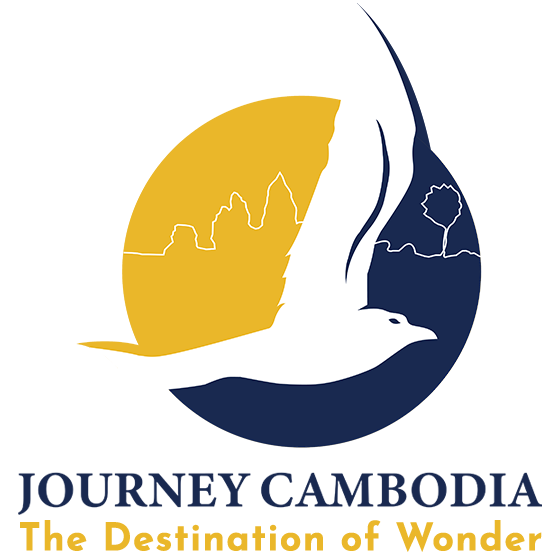The Meaning Behind Eastern Mebon Temple in Cambodia
The Sacred Mountain: Eastern Mebon Temple’s True Meaning Revealed!
Are you confused about what Eastern Mebon Temple stands for? Many travelers feel lost when they first see this old temple in Cambodia. I looked into it and found some cool facts about this famous building and its links to Hindu gods. Let’s learn what Eastern Mebon Temple means: it honors gods and shows much more.
Main Points
- Eastern Mebon Temple honors the Hindu god Lord Shiva with its design and stone carvings
- The temple looks like Mount Meru from Hindu stories, built on a man-made island
- You can see Hindu beliefs in the detailed carvings and pictures of gods when you visit
History and Layout of Eastern Mebon Temple
Built for Shiva
Eastern Mebon Temple shows deep respect for the Hindu god Lord Shiva. You can see this in how the temple is built and in its stone pictures that show different sides of Shiva’s godly self.
Inside sits a big lingam (a symbol linked to Shiva) in one of five towers, which makes clear how much people worshipped this god. King Rajendravarman II loved Shiva very much and made this big temple as a holy place for him.
This grand building shows not just faith but also the skill of Khmer workers during King Rajendravarman II’s time. The temple helps us see the king’s strong faith in Lord Shiva while giving us a peek into Hindu ways back then.
A Temple Like Mount Meru
Eastern Mebon Temple is shaped like a mountain to look like Mount Meru from Hindu myths. Workers built it in the 900s in Angkor, Cambodia. This place honors the Hindu god Lord Shiva and sits on a fake island.
The temple is 126 meters by 120 meters big and has a place for boats on its east side. It stands for holy Mount Meru, which Hindus think is where heaven is.
When you go to this temple, you see the rich past and great building skills of Hindu temples in Cambodia’s Angkor area.
Temple Design
Eastern Mebon Temple has cool features and a unique look. As a mountain temple on a fake island, it shows Mount Meru from Hindu stories.
This shape like a pyramid has steps all around that make a grand way into the temple. The whole thing has five towers on a square base.
Each tower stands for one of Mount Meru’s five peaks and honors Lord Shiva. Eastern Mebon Temple is 126 meters by 120 meters big, so it looks very grand to people who come to see it.
Step beyond the usual Angkor Wat route with the Banteay Srei and Grand Circuit Heritage Tour. This full-day journey takes you through some of Cambodia’s most detailed temple carvings and peaceful ruins, all guided by local experts. It’s a great choice for travelers seeking a deeper look into Khmer history and artistry.
https://journeycambodia.com/phnom-bakheng-temple-sunset/
What Eastern Mebon Temple Means
Hindu Stories and Gods
Eastern Mebon Temple is very important in showing Hindu myths and gods. Since it’s a temple for Lord Shiva, it shows how much Hinduism shaped the Angkor time in Cambodia.
The temple’s style and building show parts of Hindu faith, like the five towers that mean Mount Meru – where gods live. You can also see fine carvings of Hindu gods and guards all over the temple grounds. This helps you feel the deep faith history of this old place.
The Five Towers and Boat Docks
The five towers and boat docks at Eastern Mebon Temple mean a lot in its whole design. These parts show the link between sky and earth, which is a big idea in Hindu myths.
Each tower stands for one of the five peaks of Mount Meru, the holy mountain that Hindus think sits at the middle of all things. The boat docks on the east side were used for faith acts and let people come to the temple from boats.
They also show how smart old Khmer builders were, making these parts with skill and glory. When you see these towers and docks, you get a rare look at both faith ideas and building wonders from Cambodia’s rich past.
Visiting Eastern Mebon Temple
Where It Is and How to Get There
Eastern Mebon Temple sits in Angkor, Cambodia. To get there, take a tuk-tuk or hire a taxi from Siem Reap, about 12 kilometers away. After you reach East Baray lake, you take a boat to the temple’s island spot. The trip to Eastern Mebon Temple gives you pretty views of the fields around and is a fun way to see this old site.
Best Time to Go
To enjoy the beauty and calm of Eastern Mebon Temple, pick the right time to visit. Cambodia has hot weather with wet and dry times of year.
The best time to check out this great temple is in the dry months from November to March. In these months, you get clear skies and nice temps, which makes it easier to walk around the temple grounds.
The dry months also have less sticky air and less rain, so you have a nicer time. If you’re going to Angkor park or Siem Reap, plan your trip between November and March for the best time at Eastern Mebon Temple.
Tours and Trip Deals
A visit to East Mebon Temple gets better with guided tours and trip deals. These give you good info, ease, and ways to see more of the temple and what’s near it.
| Tour/Deals | Details | How Long | Cost |
|---|---|---|---|
| East Mebon Temple Guide Tour | This tour gives you a smart guide who tells you the past and what matters about the temple. | 2 hours | $25 |
| East Mebon and Angkor Wat Mix | This deal joins tours of East Mebon temple and the famous Angkor Wat, giving you a full look at Cambodia’s past and buildings. | 1 day | $50 |
| Siem Reap Heritage Tour | This tour takes you through Siem Reap’s most key spots – such as East Mebon – and shows you Cambodia’s rich roots. | 2 days | $80 |
| East Mebon Temple Photo Tour | This tour lets photo fans catch the pretty buildings and sights of East Mebon Temple. | 3 hours | $35 |
Think about these deals to make your trip to East Mebon Temple stick in your mind. It’s a chance to learn more about this 900s-old site that was built to honor Lord Shiva and shows Mount Meru, the Hindu “heaven”.
Eastern Mebon Temple stands for the Hindu god Lord Shiva and looks like Mount Meru. With its rare style, such as five towers and a fake island, it shows the rich ways of the Khmer Empire.
When you visit this temple, you get to learn about Cambodia’s past and see the beauty of old Hindu temple design.
To visit the East Mebon Temple, located in the Angkor Archaeological Park in Siem Reap, Cambodia, travelers can easily access and explore Cambodia’s rich heritage with the Banteay Srei and Grand Circuit Heritage Tour.
Siem Reap Angkor Wat Entrance Ticket – Step Into Living Stone Art
Common Questions About Eastern Mebon Temple
What is the past and why does Eastern Mebon Temple matter?
Rising from a fake island in Angkor, Cambodia, the 900s Eastern Mebon Temple stands as a lasting gift to the Hindu god, Lord Shiva. King Rajendravarman II built this mountain temple to look like Mount Meru, the sky home of gods in Hindu tales.
The temple’s grand build, fine carvings and big size show both the king’s love for Shiva and the skill of the old Khmers. Each of its five lotus-shaped towers honors one of the five peaks of Mount Meru, while its steps, book rooms and round halls make a shape that shows a trip from earth to sky.
For folks today, Eastern Mebon lets you see the rich faith ways of the Angkor time. By walking through its halls with great pictures of Hindu gods, you can think of the deep faith that led to its making. This wonder of old building still grabs those who want to learn the secrets of Cambodia’s old marvels.
What is the layout and style of Eastern Mebon Temple?
The grand style of Eastern Mebon temple shows in its rare layout and fine design parts:
- Five Towers – Five lotus-shaped towers, standing for the five peaks of Mount Meru, rise from a three-step base. Each has a shrine for Lord Shiva.
- Steps – Steps with lots of carvings wrap the temple on all sides, making a steep look.
- Book Rooms – Two book rooms stand on each side of the door at the low level, a common part of Khmer temple style.
- Hall – A full hall goes around the inner space, its walls have great wall art showing Hindu tales.
- Docks – Boat docks sit on the east side, with rock steps going down to the lake.
- Decor – Fine carved fronts, lintels, and slim posts show pics of Hindu gods, myth beasts, flowers and other pretty things.
The mix of Eastern Mebon’s faith sense and its fine build makes it a top case of Khmer art skill led by Hindu world views.
What does the style of Eastern Mebon Temple stand for?
Eastern Mebon Temple has rich Hindu signs, most tied to the Hindu god, Shiva:
- The five towers stand for the five peaks of Mount Meru, tying the earth temple to the sky holy mountain.
- The temple’s mountain-like step shape also shows Mount Meru’s holy form.
- The temple’s spot on a fake island means Mount Meru coming up from first waters.
- The lingam shrine at the heart of the temple shows Shiva’s life-giving powers.
- Fine carvings of Shiva on fronts and halls stress the temple’s gift to this Hindu god.
- Pics showing tales from Hindu stories like the Ramayana and the Mahabharata tie the temple to key events in myths.
- Pics of sky dancers, gods, and myth beasts show the god’s being there.
This sign set gives the build a space sense that shows Hindu faith. When you know these signs, you can work out the temple’s space secrets.
What parts make Eastern Mebon Temple one of a kind?
While like other Angkor temples, the Eastern Mebon stands out with its rare mix of build parts:
- Its mountain-temple form is rare among temple-mountains which tend to use a more stair-like step shape.
- The full hall that wraps the inner shrines was a new part for its time.
- The big use of brick not rock for its towers and top level sets it apart from same-time temples.
- Its aim, with the main door to the west not east, broke rules for Khmer temple layouts.
- The known boat docks lined on the east-west line are build-wise rare.
- The flower marks that grace its book rooms were a smart touch by its builders.
- The closed halls with their clear wall art show top skill.
The temple’s odd form and fine details show the great sight and skills of the builders who made this Angkor-time mark.
What does the statue of Vishnu at Eastern Mebon Temple mean?
A big statue of the Hindu god Vishnu lying on the snake Ananta stands out on the South Book Room of Eastern Mebon Temple. This statue shows the space loop of death and new life in Hindu thought.
Key signs:
- Vishnu lying down shows the god in yoga sleep, where the world is pulled into the space sea.
- His pose shows the loop of end and start of life.
- His lying body floats on the snake Ananta, showing the no-end side of time.
- Snake Ananta means “the no-end one” – a form of all time.
- The lotus from Vishnu’s navel shows god’s work and new starts.
Vishnu’s place backs up the temple’s theme of Hindu space views. It gives faith sense into the deep faith ideas that led to this Cambodia build prize.
What decor makes the art of Eastern Mebon Temple one of a kind?
The Eastern Mebon temple has lots of fine carved low reliefs showing Hindu myths, gods, and myth beasts mixed with flower and shape marks. Key decor parts have:
- Fine fronts with clear scenes from Hindu tales.
- Fine devatas (god forms) on posts and wall parts.
- Fine lintels with carvings of the Hindu three – Shiva, Vishnu and Brahma
- Myth beasts like the half-bird half-man Kinnari.
- A god with a thousand arms, showing Buddhist sway.
- Shapes and flower styles that stand for the earth’s growth.
- Sky dancers in lush yards, their hot forms and moves fixed in stone.
These fine marks turn the temple into a full view of Hindu and Buddhist space views. The stucco carvings show great art skill, since they break down fast with time.
Why does the water around Eastern Mebon Temple matter?
The ditch around Eastern Mebon temple has deep sense tied to Hindu space views and smart build skills.
Belief Signs
- The temple’s island spot shows Mount Meru coming up from first sea.
- The ditch shows the space waters that wrap Mount Meru.
- In Hindu faith, water means growth, new life and the source of life.
Build Sense
- The ditch forms part of a smart water plan made around Eastern Mebon.
- It links to the Eastern Baray, a big lake giving water to Angkor.
- The ditch kept water for over a thousand years, which shows smart building.
- Boat docks let folks come for faith acts.
Water puts Eastern Mebon in the green and holy space while also helping with more day-to-day build needs. As one of Angkor’s water-build wonders, it still has its old glory for folks now to like.
What’s the best way to see Eastern Mebon Temple?
To fully feel the grand side of Eastern Mebon temple, try these tips:
- Hire a tuk-tuk or taxi for easy access from Siem Reap. The temple is about 12 km from town.
- Join a guided tour to get a smart guide’s facts on past and signs.
- Go in the cool months from November to March when temps are best.
- Show up early day or late day to miss crowds and catch cool temps.
- Walk the steps in a clock way to take the sign path to Mount Meru.
- Bring a hat, sun block and water to beat the heat when checking the old parts.
- Take your time – 2-3 hours at least – to soak in the belief feel.
- Dress right by with tops and past knees.
- Check Angkor pass needs to not have snags. You can get passes for more days.
With some plans and prep, folks can find Eastern Mebon’s build grand side and deep Hindu signs for a trip they won’t miss.
The great looks and deep Hindu space views of Eastern Mebon Temple grab all who come to this 900s Cambodia mark.
Through its big build, fine carvings and rich signs, Eastern Mebon shows the high art sight and faith depths of the old Khmer world.
As you walk its steps, towers and halls, you can see the fire that led to its birth over a thousand years back.
For folks now who want to grasp Cambodia’s old past, finding the secrets of the odd Eastern Mebon takes you on a small trip into the secrets of art, faith and man’s mind.









